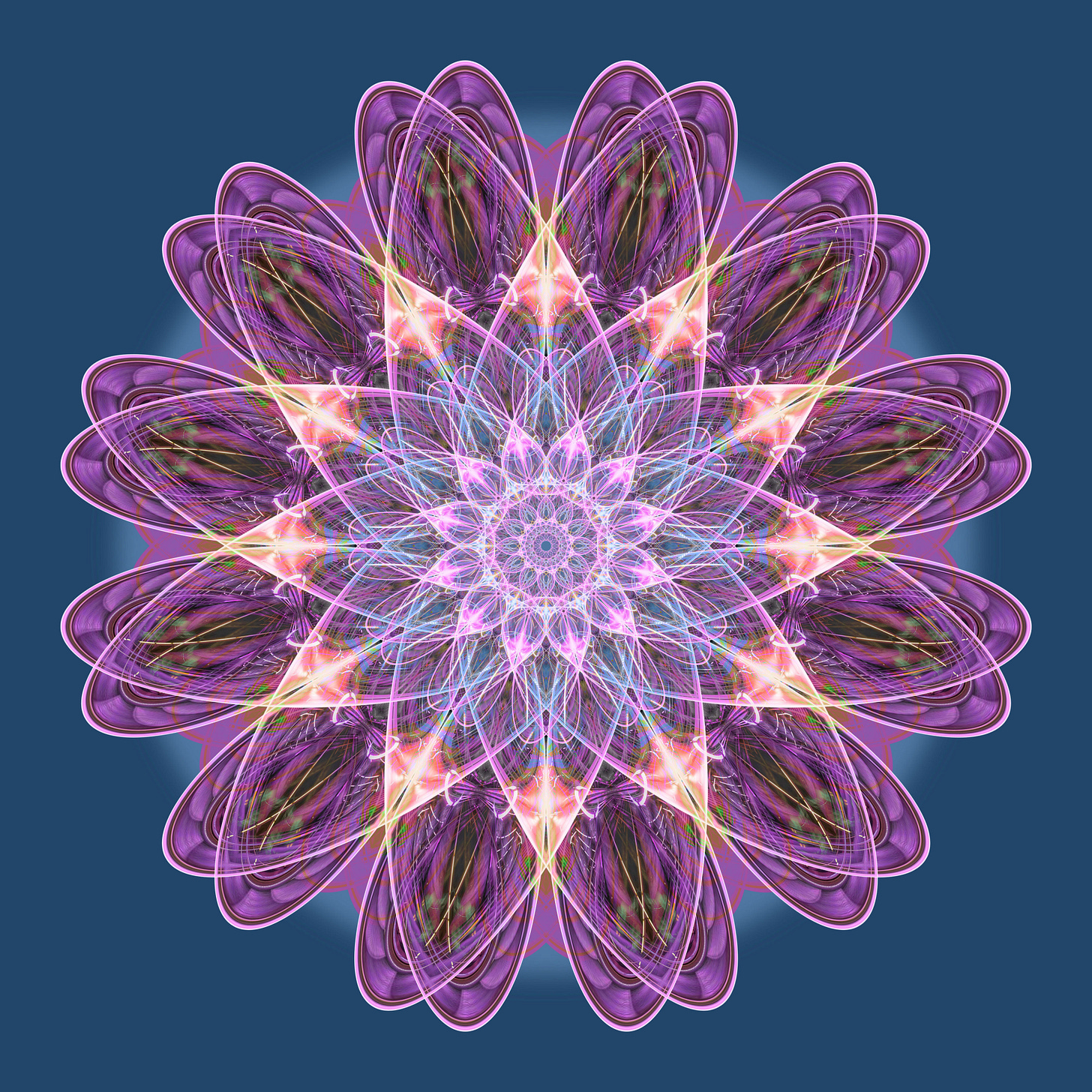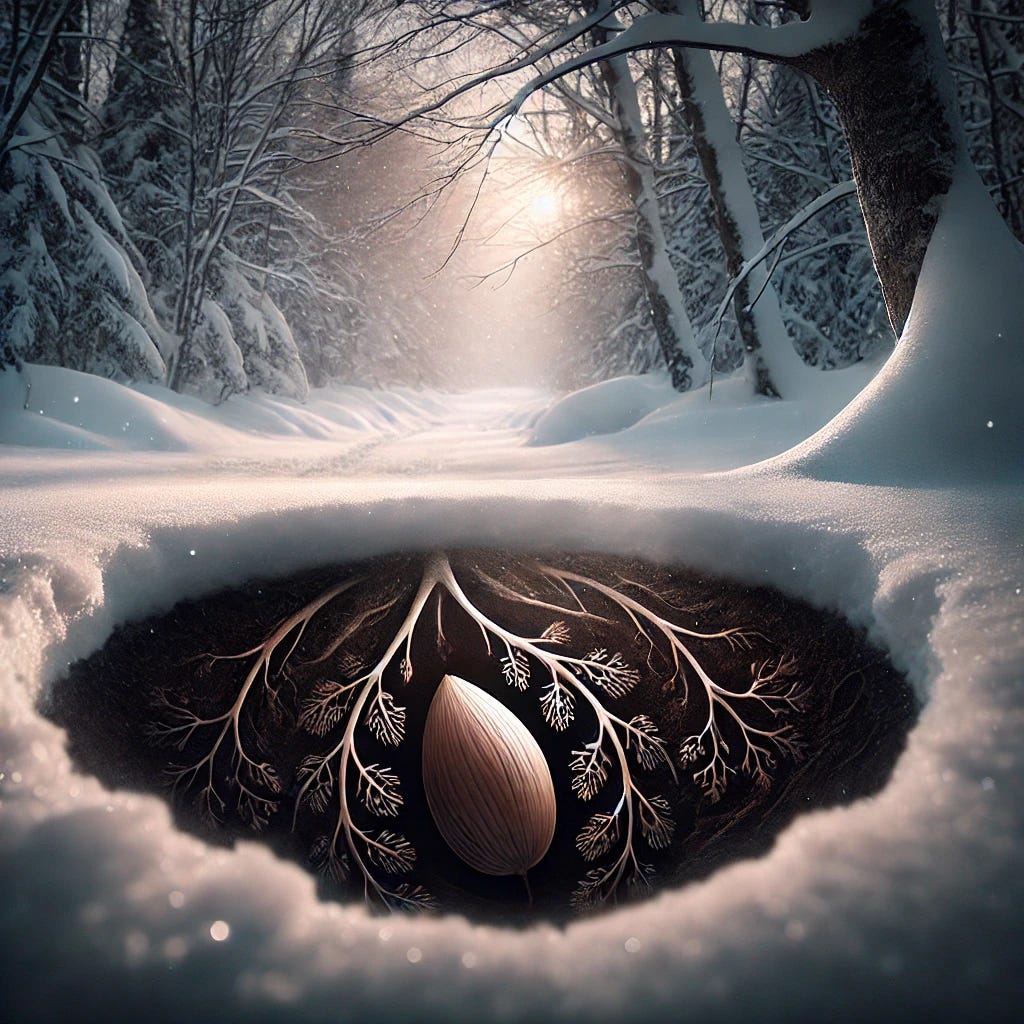Imbolc in the Frozen North
How can we authentically celebrate land-based festivals when our own landscapes are so different from those where the holydays originated? That’s the question haunting me this Imbolc…
Does it feel like spring yet?
Not where I am!
Here in the forests of Québec, the river is frozen over and everything’s covered in snow that’s only getting deeper.
Growing up in California and now living in the frozen North, I’m well aware that the seasons occur differently in different climates, and I’m fascinated by the way that landscape influences and determines so much of culture.
It’s no longer obvious in the modern world, where there’s constant interplay between cultural and geographical regions, but historically, landscape was the determining factor in how we lived our daily lives.
Recognizing the seasons was crucial to survival. From knowing when the birds were laying eggs to feeling when a storm was on its way, our lives depended on being attuned to the subtle signs of Nature.
Around this time—February 1—the Ancient Celts celebrated a holyday called Imbolc.
Literally “in the belly”, Imbolc celebrates the moment before birthing… during the season when the ewes are heavy with lamb and the seeds deep in the earth are beginning to stir.
Those of us who claim Irish or Scots indigenous heritage remember in our blood the beautiful celebrations tied so closely with the land. Those who wish to rekindle a deep connection with the Earth—regardless of cultural origin—turn to these celebrations for guidance.
There’s been a strong revival of the ancient Celtic holydays among modern pagans.
And while the Celtic Wheel of the Year is a relatively modern invention, many of these traditions go back centuries—in some cases to neolithic times—offering connection with our ancient ancestors.
But how can we authentically celebrate land-based festivals when our own landscapes are so different from those where the holydays originated?
That’s the question haunting me this Imbolc…
None of the traditional rituals fit the land around me—hard with ice, unyielding and unwilling to admit that spring will again return to us.
To create authentic celebrations—which work both in a modern world and in different landscapes—we must somehow come back to the root and intention of the holydays we celebrate.
If we can admit to ourselves that we cannot know the secrets of our long-dead ancestors nor understand everything these holydays meant to them, perhaps we can let go of simply copying the forms they taught us and create anew.
Is it possible to rekindle the deep connection with the Earth that first taught our ancestors how to celebrate?
It must be.
Imbolc celebrates first whispers of spring... the stirring of the seed deep in the earth.
Yet here in the winter wilds, nothing is stirring.
Here—we hold still, almost holding our breath, watching the modern world continue at its break-neck pace, unable to authentically join in the chaos.
All the seeds are deep in winter dreams.
And that’s what I will be celebrating this year—
The dreaming… the quiet becoming… the space of stillness that will one day quiver, but which is yet dormant, waiting.
It can be difficult to wait.
Our modern world doesn’t train us to be good at waiting.
Yet it is all ways part of the cycle.
Perhaps, not the most comfortable part. Nor the most glamorous. Perhaps not the part we want to write home about. Or even the part we can describe.
It’s what happens in the chrysalis, which the caterpillar doesn’t live to speak of.
It’s the invisible inflection point on the arc of spiritual transformation.
And it’s a place we like to avoid.
It would be easier if Imbolc were simply the stirring of the seeds here. It’s beautiful to welcome signs of new life.
But deep “in the belly” right now, there isn’t even a rumbling. It’s frozen solid.
To what then, do we look for clues in how to be this Imbolc—if not our ancestors… if not those who came before?
I look to the poets.
When no one else knows what to do, I often find the poets are knee deep in pomegranate seeds… eating their hearts out… weeping and smiling at once.
As we ponder how to celebrate this Imbolc authentically, perhaps it’s time to dive into waiting itself.
Waiting
You keep waiting for something to happen,
the thing that lifts you out of yourself,
catapults you into doing all the things you've put off
the great things you're meant to do in your life,
but somehow never quite get to.
You keep waiting for the planets to shift
the new moon to bring news,
the universe to align, something to give.
Meanwhile, the pile of papers, the laundry, the dishes the job –
it all stacks up while you keep hoping
for some miracle to blast down upon you,
scattering the piles to the winds.
Sometimes you lie in bed, terrified of your life.
Sometimes you laugh at the privilege of waking.
But all the while, life goes on in its messy way.
And then you turn forty. Or fifty. Or sixty...
and some part of you realizes you are not alone
and you find signs of this in the animal kingdom
when a snake sheds its skin its eyes glaze over,
it slinks under a rock, not wanting to be touched,
and when caterpillar turns to butterfly
if the pupa is brushed, it will die –
and when the bird taps its beak hungrily against the egg
it's because the thing is too small, too small,
and it needs to break out.
And midlife walks you into that wisdom
that this is what transformation looks like –
the mess of it, the tapping at the walls of your life,
the yearning and writhing and pushing,
until one day, one day
you emerge from the wreck
embracing both the immense dawn
and the dusk of the body,
glistening, beautiful
just as you are.
—Leza Lowitz
Yes.
Yes… That!
The moment inside the egg, just before it’s too small.
Knowing that you’re going to have to break it open and wondering if you could ever be that thing that’s brave enough to tap on the eggshell and burst forth into the world.
Don’t worry.
Today isn’t the day to burst forth. Or even the day to tap on the shell.
You’ll know that time because the world will suddenly feel too small.
Now it is simply time to wait. Allow yourself to be cozy. Remember all the dreams you laid down in the earth before the snows set in. Keep them company.
While you’re waiting…
HERE ARE SOME IDEAS FOR HOW TO CELEBRATE IMBOLC WHETHER OR NOT SIGNS OF SPRING ARE YET APPEARING:
Leave an item (traditionally a ribbon or scarf) outside the night before Imbolc for Brigid to bless. Brigid is the Celtic goddess of fire, poetry, and healing. Imbolc is Her holyday.
Make a list of all the dreams you have been dreaming of your life—these are the seeds you have planted that will soon be stirring. Allow yourself to be present with your list—sing it, dance it, love it, and then burn it. Sprinkle the ashes on the earth in your garden to nourish the seeds there when they’re ready.
Allow yourself to curl up, cuddle up, snuggle in, and get cozy. Like the egg that needs warmth to be ready to hatch or the seed which is is packed tightly in the womb of the earth, this is a time when your body and soul will both benefit from a little cocooning.
Be quiet in your heart and spirit, even if your mind won’t always comply. Allow yourself to read instead of watching TV. Sit by the fire, stare out the window. Let yourself experience the space of not doing.
Light a fire and feel the warmth of the life-bringer who carried our ancestors through every cold season long before insulation and electricity. Fire is strongly tied with Brigid, the goddess honored at Imbolc, and can be seen in many lights—the fire of creativity and inspiration, the warmth of healing light, or a welcoming beacon heralding the return of spring.

Wishing you all a blessèd Imbolc!
And a BIG welcome to all the magical souls who have just joined us here at Mystery, Magic & Mayhem!
Check back soon for February’s magical theme and an exciting announcement about our Heretic Reading Circle book this month!






I love this deeper inquiry into how to live into, not simply copy or try to replicate, sacred ancient holy days. Each holy day / season holds its own wisdom and has its own soul. So much has been lost and yet, this listening and adapting to that you are speaking on is such a beautiful act of re-membering. Thank you.
I really resonate with this Allysha, partly because I always find it difficult to follow what other people do, even if it’s deeply imbedded in my ancestral threads. Also because whilst we follow the seasons, we also follow our own rhythm, which looks very different from someone else. For me it’s have that deep connection to Mother Earth, to watch for the signs of what you need to work with, watching your own shoots sprout, not just the ones you can see.